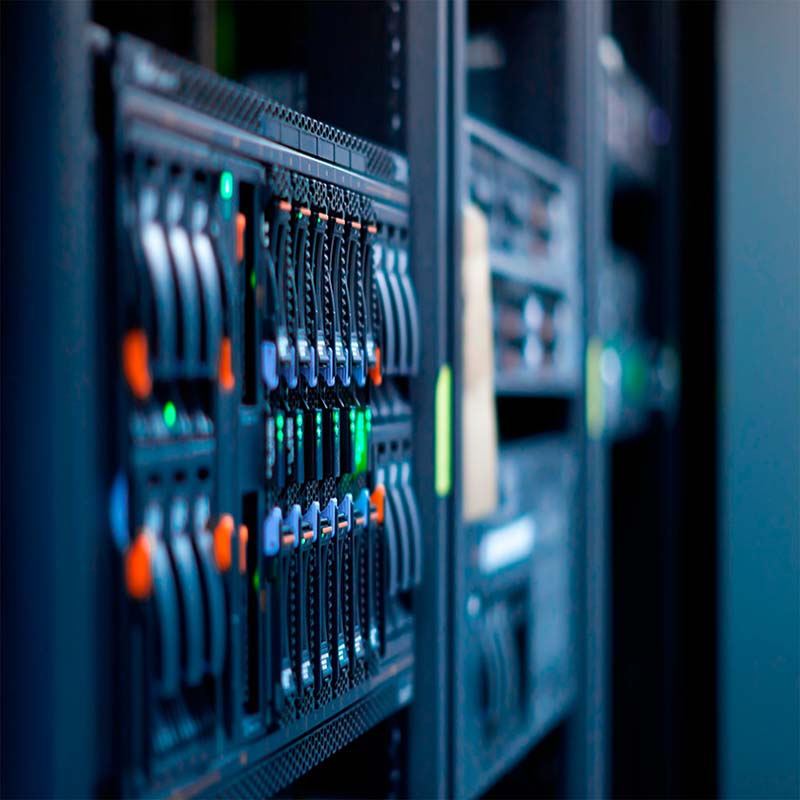
Computational Physics and Information Technologies Division functions in two main directions: computational physics and data analysis (as scientific activity), development and maintenance of computing and network resources (as software and technical activity). Scientists, researchers, PhD students, engineers and technicians are actively involved in execution of the activities of the Division.
The first Internet connection in Armenia came in 1994 at AANL (YerPhI) based on DESY (Hamburg) satellite connection. Currently, the AANL Computational Physics and Information Technologies Division provides a number of services, including Domain Name Service (DNS), E-mail services (SMTP, POP, IMAP), webmail, mailing lists, database systems with Internet access, secure data transmission (VPN, SSH , SFTP, SSL, S-tunnel), remote administrtaion, web hosting, archiving, backup, data storage and preservation, anti-virus, antispam, antispyware maintenance, audio and video conferencing, Wi-Fi and eduroam (educational roaming) worldwide Wi-Fi roaming access, video media server, document server (Invenio CERN/IAEA), etc.
Powerful UNIX servers (Super-Micro, Dell) installed at AANL are equipped with modern libraries and computational tools for High Energy Physics (HEP), such as CERN libraries, Wolfram Mathematica, ALPS (for parallel computations), also Python software package oriented machine learning libraries and tools. An outside secure access to UNIX servers is established by VPN. To increase the performance of UNIX servers and reduce the cost of electricity, system virtualization is applied.
In recent years, through the joint work with DESY (furthermore JLab), a new project has been executed to create a Data Preservation Hub, with complete inclusion of data collected by HERA accelerator within HERMES collaboration from 1993 to 2007. At present, all components of the HERMES software package are installed on a dedicated AANL (YerFI) server, which allows both experimental and Monte Carlo data processing. There is some work going on in the direction of joint processing of data from HERMES-JLab-COMPASS scientific experiments within spin physics studies.
In the scope of the Division activities, there is an agreement signed with the National Academy of Sciences of the RA to increase the bandwidth of the external Internet connection. And the AANL internal Internet network (LAN) has currently reached the bandwidth of 1 GB/s. In the nearest future, with the help of the Institute of Informatics and Automation Problems of NAS RA (IIAP), it is planned to increase to reach the planned speed up to 3 (later - 10) GB/s.
The collaboration with IIAP specialists, the AANL Computational Physics and Information Technologies Division has significantly improved the Eduroam system, as an easy and effective way to provide Wi-Fi connectivity in all educational and scientific centers abroad, including DESY, CERN, KEK, etc. This opportunity is available to all AANL employees through their personal email accounts.
The sub-directions of the Division activities within computational physics and data analysis are:
- Studies of statistical features of new pseudo-random numbers generator MIXMAX developed at AANL (N. Akopov, G. Savvidy), which is one of the popular generators as to its statistical features and record period,
- Development and creation of a new effective approach with essentially lower time and computer memory consumption to calculate the multidimensional Kolmogorov-Smirnov test. These works were supported by the European Union's Horizon 2020 research and innovation program under the Marie Sklodowska-Curie grant agreement No 644121,
- Physical analysis of the data collected by HERMES/OLYMPUS experiments in spin physics, nucleon structure and hadrons production phenomena.
- Since 2018 the AANL-Belle2 group became an official member of the Belle II international experiment. It is planned to study the wide scope of variety phenomena in modern HEP such as B meson physics (rare decays), CP violation in B meson decays, precision measurements in QCD; physics of Tau leptons (rare decay studies), searches for new physics beyond the Standard Model, dark photon searches and etc.
The AANL-Belle2 team includes leading and senior researchers, PhD students, and Master’s students who conduct detector performance and physical data studies, participating in regular video-meetings and reporting the group findings in person at Belle II collaboration global meetings, or remotely observing and participating in experimental data collection activities.
One of the main directions of AANL-Belle2 group activities is the comprehensive study of the ARICH detector performance for particle identification, also the parameters tuning of the Pythia8 event generator with modern tools such as the “Professor2” and “Apprentice” packages.
Within the Belle II international cooperation, more than ten papers have already been published in scientific journals with a high impact factor. Scientific articles have also been published in Armenian journals describing Monte Carlo studies for Belle II physics.
The number of expected annual publications in leading scientific journals is 15-20. For this purpose, the Division intends to engage young researchers with attractive work within the framework of international cooperation, during the next 10-15 years (long perspective).
Collaborations
- DESY, Hamburg, Germany,
- KEK, Tsukuba, Japan,
- Bilbao University, Spain.
Conferences
The Division regularly organizes international conferences and workshops. The staff delivers talks at popular international conferences and work meetings, presenting the obtained scientific findings.
Career Opportunities
Prospective students and young researchers can apply to the Division to conduct research in DESY and KEK research centres. The Division provides an opportunity to work in modern IT infrastructure.

